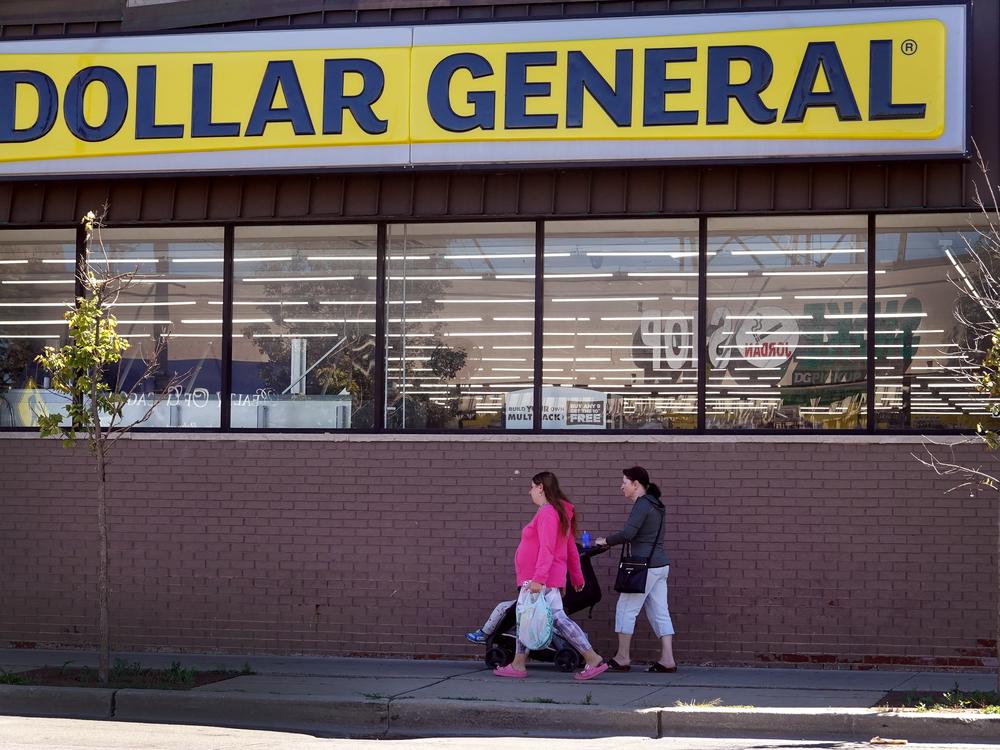Section Branding
Header Content
Discounting is back in fashion, as Americans get tired of paying more
Primary Content
After two years of paying more for things, Americans are growing more cautious about how they spend their money and are forcing retailers to offer more discounts.
Target and Walmart are rolling back prices on grocery items and McDonald’s is introducing a $5 meal.
And stores like Dollar General, which specialize in discounted items, are attracting more cost-conscious customers.
“It’s a cautious consumer,” said CEO Todd Vasos, describing Dollar General's typical shopper. “She is definitely making tradeoffs in the store and at the shelf."
Dollar General reported better-than-expected profits when it released its most recent quarterly results on Thursday. The discount chain says it’s attracting more middle- and upper-income shoppers, looking for bargains. But Dollar General's lower-income shoppers are often checking out with fewer items in their baskets.
Financial strain is real
Broader data are showing that people are feeling the strain. Retailers say customers are pushing back against additional price increases, according to the Federal Reserve's latest “Beige Book,” which collects anecdotal information from businesses around the country.
Walmart said it cut prices on nearly 7,000 items while Target slashed prices on 1,500 items with plans to cut another 3,500 throughout the summer.
That newfound caution among consumers marks a change from last year, when robust spending kept the economy growing rapidly, even as people told pollsters they were gloomy about the outlook. Revised figures released this week show the economy grew at an annual rate of just 1.3% in the first three months of the year, not 1.6% as originally reported. The downward revision was primarily the result of lower consumer spending.
The slowdown continued in April, according to a report from the Commerce Department Friday, which showed consumer spending on goods fell 0.2% during the month.
Spending on services increasing
People continue to spend more, however, on services – things like haircuts and tickets to sporting events. Spending on services grew rapidly in the first three months of the year and continued to expand in April, albeit at a slower pace.
The rising price of services has kept inflation stubbornly high, even as the price of many goods has begun to fall.
Consumer prices in April were up 2.7% from a year ago, according to the Commerce Department’s inflation yardstick, which is closely watched by the Federal Reserve. While that’s down from last year, it remains well above the Fed’s inflation target, which is 2%.
“As long as demand remains as robust as it is in the service sector, it’s going to be hard for the Fed to deliver on those expected rate cuts,” said Tim Quinlan, an economist at Wells Fargo.
The central bank has said it wants to be confident that prices are under control before it starts cutting interest rates. Rates are expected to remain stable through the summer, while investors put the odds of a September rate cut at just over 50%.
Income outpacing spending
Personal income rose slightly faster than spending in April – a welcome turnaround after spending outpaced income growth in six of the seven previous months.
When spending grows faster than income, shoppers are forced to draw down savings or use their credit cards to make up the difference. Credit card balances grew to $1.11 trillion in the first quarter of the year, and nearly one out of five card holders are at or near their credit limit.
“I know it’s sort of the default setting for an economist to cheer it on and root for strong consumer spending, but I sometimes feel like it might be in people’s best interest to dial it back a bit,” Quinlan said.

